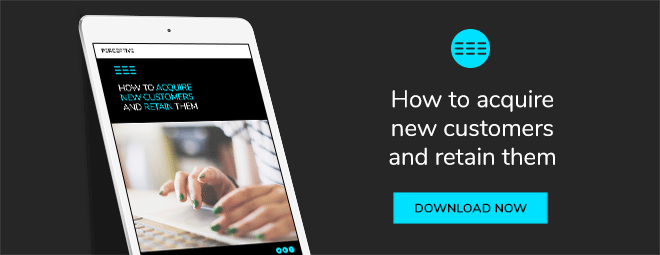 In our increasingly over-saturated business environment, the main challenge companies have is cutting through the marketing maelstrom. We're here to provide a few timely answers.
In our increasingly over-saturated business environment, the main challenge companies have is cutting through the marketing maelstrom. We're here to provide a few timely answers.
The lay of the land has changed
Today, brands must be online for one simple reason: Google. As many as 72 per cent of buyers turn to Google while in the research stage of their buying cycle. It’s an incredibly important research tool for the early stages of a customer’s journey.
More than ever, people are using the web to research, and there are more people involved in that researching process. In fact, SiriusDecisions found that the length of the average sales cycle has increased 22 per cent—largely thanks to more people getting involved in the buying process.
The business world is reacting rapidly, pumping more content out into the world in the hopes of hooking a few new customers. Blogs, eBooks, marketing emails are now commonplace. Another eye-opener: only 22 per cent of business emails get read. The rest end up being deleted or in spam folders.
Related content: How to get more relevant leads for your business
Know your audience
To stand out from the crowd businesses need to know their customers in depth. Most of all, they need to know what kind of messaging and content their customers best respond to. Not knowing is the equivalent of trying to hit a bullseye. Blindfolded. Your marketing efforts will fall far short of the mark.
Luckily, customer insights are helping companies to uncover this vital information. This is the process of analysing both qualitative and quantitative customer data, to group your customers into more defined audiences–each with unique characteristics, traits and behaviours. By segmenting your audiences you will be able to identify those you want to (and can) reach, and those you are better off not targeting. With this information now on hand, you—and your company—can use it to strategically engage with your customers.
A website is not enough
While having a great website (in terms of user experience and functionality) is important for engaging with customers online, businesses need to do more. Having a strong SEO presence and effective online advertising campaigns are essential to move buyers from the Internet of Things (IoT) to your website.
Deliver a world-class experience
Attracting your customers is only half the battle, keeping them engaged is the rest. Distractions are rife in the digital landscape—and the material one too—and it’s all too easy for a potential customer to click away to a competitor. Perhaps they couldn’t find what they were looking for? Maybe they may have grown frustrated with your online store or poor service, or perhaps your content simply didn’t resonate with them? It all boils down to one concept: customer experience.
Customer experience is becoming the bread and butter of modern business. According to PwC, 73 per cent of all customers point to experience as an important factor in their buying decisions. They rate it above price and quality.
Providing superb experiences is also good for your bottom line. Customers are willing to pay up to 16 per cent more for products and services that are encapsulated in a quality experience.
However, the challenge is getting the experience right. Knowing whom you’re selling to, what they like and don’t like, what they are interested in and what their challenges are means you can deliver a customer experience—from website to salesperson to purchase—that meets their exact needs and expectations.
Tip: A superb customer experience doesn’t need to be flashy. Focus on getting the basics right–knowledge, speed, convenience/efficiency and friendly service– and the rest will follow.
Related content: 5 ways to keep profitable customers coming back
Customer insights: where to start?
A voice-of-customer survey is a great way to begin this journey.
Talk to your sales team too. They speak directly with your customers every day and may have unique insights you’d not receive from anywhere else. A few good questions to ask them are:
- What five questions are your sales team asked the most?
- What are the biggest pain points for customers when they come to you?
- What are your customer or lead demographics, what type of customers or leads do they speak to the most?
- What messaging do they respond to the most?
Once you have the answer to these questions, you can start developing your strategy to target new customers.
Related content: 5 ways to be more a profitable business with customer insights
In the end, cutting through the marketing din is not about who shouts loudest. It’s about targeting the right customers, with the right content, at the right time—then delivering an experience that is too good for them to turn away from.
Want to learn the industry secrets to customer acquisition and retention? Check out our eBook below!
